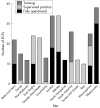The evolution of the emergency care practitioner role in England: experiences and impact
- PMID: 16714501
- PMCID: PMC2564336
- DOI: 10.1136/emj.2005.027300
The evolution of the emergency care practitioner role in England: experiences and impact
Abstract
Background: The emergency care practitioner (ECP) is a generic practitioner who combines extended nursing and paramedic skills. The "new" role emerged out of changing workforce initiatives intended to improve staff career opportunities in the National Health Service and ensure that patients' health needs are assessed appropriately.
Objective: To describe the development of ECP Schemes in 17 sites, identify criteria contributing to a successful operational framework, analyse routinely collected data and provide a preliminary estimate of costs.
Methods: There were three methods used: (a) a quantitative survey, comprising a questionnaire to project leaders in 17 sites, and analysis of data collected routinely; (b) qualitative interpretation based on telephone interviews in six sites; and (c) an economic costing study.
Results: Of 17 sites, 14 (82.5%) responded to the questionnaire. Most ECPs (77.4%) had trained as paramedics. Skills and competencies have been extended through educational programmes, training, and assessment. Routine data indicate that 54% of patient contacts with the ECP service did not require a referral to another health professional or use of emergency transport. In a subset of six sites, factors contributing to a successful operational framework were strategic visions crossing traditional organisational boundaries and appropriately skilled workforce integrating flexibly with existing services. Issues across all schemes were patient safety, appropriate clinical governance, and supervision and workforce issues. On the data available, the mean cost per ECP patient contact is 24.00 pounds sterling, which is less than an ED contact of 55.00 pounds sterling.
Conclusion: Indications are that the ECP schemes are moving forward in line with original objectives and could be having a significant impact on the emergency services workload.
Conflict of interest statement
Competing interests: there are no competing interests
Comment in
-
Should emergency medical technicians be considered for the role of the emergency care practitioner?Emerg Med J. 2006 Nov;23(11):888. doi: 10.1136/emj.2006.038968. Emerg Med J. 2006. PMID: 17057158 Free PMC article. No abstract available.
References
-
- Department of Health The NHS plan. London: DoH, 2001
-
- Department of Health Reforming emergency care. London: DoH, 2001
-
- Audit Commission By accident or design: improving accident & emergency services in England and Wales. London: HMSO, 1996
-
- Audit Commission Review of national findings. Accident & emergency. London: Audit Commission, 2001
-
- Department of Health Statistical bulletin 2000/13: ambulance services, England: 2002–3. London: DoH, 2003
Publication types
MeSH terms
LinkOut - more resources
Full Text Sources
Medical


